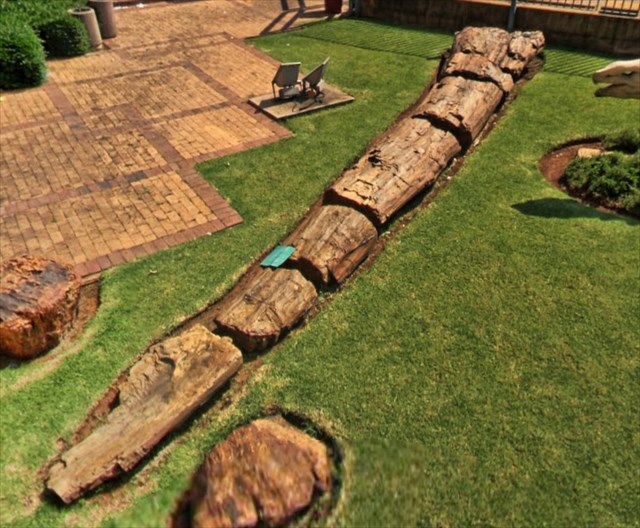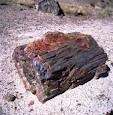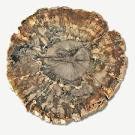9Icon Walk - Petrified Tree Earthcache EarthCache
9Icon Walk - Petrified Tree Earthcache
-
Difficulty:
-

-
Terrain:
-

Size:  (other)
(other)
Please note Use of geocaching.com services is subject to the terms and conditions
in our disclaimer.

MEGA South Africa 2012 – This cache has been placed for the duration of South Africa’s first Mega Event.
Here at the entrance of the Museum you will find an example of a fossilised tree also known as Petrified Tree.
Petrified wood
(from the Greek root petro meaning "rock" or "stone"; literally "wood turned into stone") is the name given to a special type of fossilized remains of terrestrial vegetation. It is the result of a tree or tree-like plants having completely transitioned to stone by the process of permineralization. All the organic materials have been replaced with minerals (mostly a silicate, such as quartz), while retaining the original structure of the stem tissue. Unlike other types of fossils which are typically impressions or compressions, petrified wood is a three-dimensional representation of the original organic material. The petrifaction process occurs underground, when wood becomes buried under sediment and is initially preserved due to a lack of oxygen which inhibits aerobic decomposition. Mineral-laden water flowing through the sediment deposits minerals in the plant's cells; as the plant's lignin and cellulose decay, a stone mould forms in its place.
The word, to petrify, literally means, "turn to stone." Petrified wood, then, is wood that has turned to stone. The English word is similar to the Greek (piedra) and Latin (pietra) words for stone.
Petrified wood is a fossil of a woody plant preserved by permineralization through time by chemical and physical
processes. In some cases, fossilized wood is readily identifiable. Generally, the species can be determined by examining thin slices of the fossil under a microscope. The microscopic structure of the fossilized wood is then compared to the cellular structure of living species.In general, stem tissue takes less than 100 years to petrify. The organic matter needs to become petrified before it decomposes completely. A forest where such material has petrified becomes known as a Petrified Forest.

Elements
Elements such as manganese, iron and copper in the water/mud during the petrification process give petrified wood a variety of color ranges. Pure quartz crystals are colorless, but when contaminants are added to the process the crystals take on a yellow, red, or other tint.
Following is a list of contaminating elements and related color hues:
- carbon - black
- cobalt - green/blue
- chromium - green/blue
- copper - green/blue
- iron oxides - red, brown, and yellow
- manganese - pink/orange
- manganese oxides - blackish/yellow
Petrified wood can preserve the original structure of the stem in all its detail, down to the microscopic level. Structures such as tree rings and the various tissues are often observed features.
Petrified Wood is a fossil in which the organic remains have been replaced by minerals in the slow process of being replaced with stone. This petrification process generally results in a Quartz Chalcedony mineralization. Special rare conditions must be met in order for the fallen stem to be transformed into Fossil Wood or Petrified Wood. In general, the fallen plants get buried in an environment free of oxygen (anaerobic environment), which preserves the original plant structure and general appearance. The other conditions include a regular access to mineral rich water flowing through the tissues, replacing the organic plant structure with inorganic stone. The end result is Petrified Wood, a plant, with its original basic structure in place, replaced by stone. This process could occur in less than one thousand years. Exotic minerals allow the rare red and green hues that can be seen in more rare specimens.
Wood can be petrified by two basic processes, both of which usually involve burial in volcanic ash. This ash decomposes in the presence of water, enriching the groundwater with silica.
In the first type of petrification, the wood decays in a hot, silica-rich environment. As each molecule of wood decomposes and is carried away, it is replaced by a molecule of silica. Eventually the replacement is complete, with the mineral impurities in the silica being responsible for an array of beautiful colors in the final product. This type of petrified wood can be polished, and often becomes an object of incredible beauty. Once silicification is complete, there is no organic material remaining, but since on occasion the light and dark portions of the tree's growth rings may decay at different rates, hints of the tree rings may be preserved if the minerals present change over time. Many of the petrified trees found in the Petrified "Forest" of Arizona are of this type.
The other type of petrification involves the total infiltration of the porous wood by silica-rich water. The silica (or in a few cases calcite, or a combination of both) plugs up the pores, preventing complete decay. This allows individual cells to be remarkably well preserved, and in many cases the tree ring pattern can easily be seen. The petrified trees in Yellowstone Park are of this type, with tree rings readily visible.
As is now well known, wood can petrify rapidly. Several laboratory experiments have devised ways in which this can be done, mirroring natural settings. (See Sigleo, 1978 "Organic Geochemistry of Silicified Wood," Geochimica et Cosmochimica Acta, vol. 42, pp. 1397-1405, and Leo and Barghoorn, 1976, "Silicification of Wood," Botanical Museum Leaflets, vol. 25, no. 1, Harvard University, 47 pp.)
Wood can also be petrified in field settings. During one field experiment, researchers dangled a block of wood down inside an alkaline spring in Yellowstone Park to see what effect this hot, silica-rich environment would have. In just one year, substantial petrification had occurred. I recently read an advertisement in a magazine for real "hardwood floors." The company was petrifying wood commercially. The point is, it does not take long ages to petrify wood, it just takes the right conditions.
Images from the Internet:







Source:
http://en.wikipedia.org/wiki/Petrified_wood#Elements
http://www.icr.org/article/1145/
http://www3.northern.edu/natsource/earth/Petrif1.htm
To qualify, please answer the following questions: 1. What date was this museum originally opened and by what name was it known?
2. Describe the structure and colours of the Petrified Tree?
3. What do you think is the composition of the minerals in the tree if you look at the colours of the crystals?
4. Add some photographs of interesting things you might spot in the vicinity.
I have earned GSA's highest level:

Additional Hints
(Decrypt)
Erzrzore gb fraq lbhe nafjref!!??